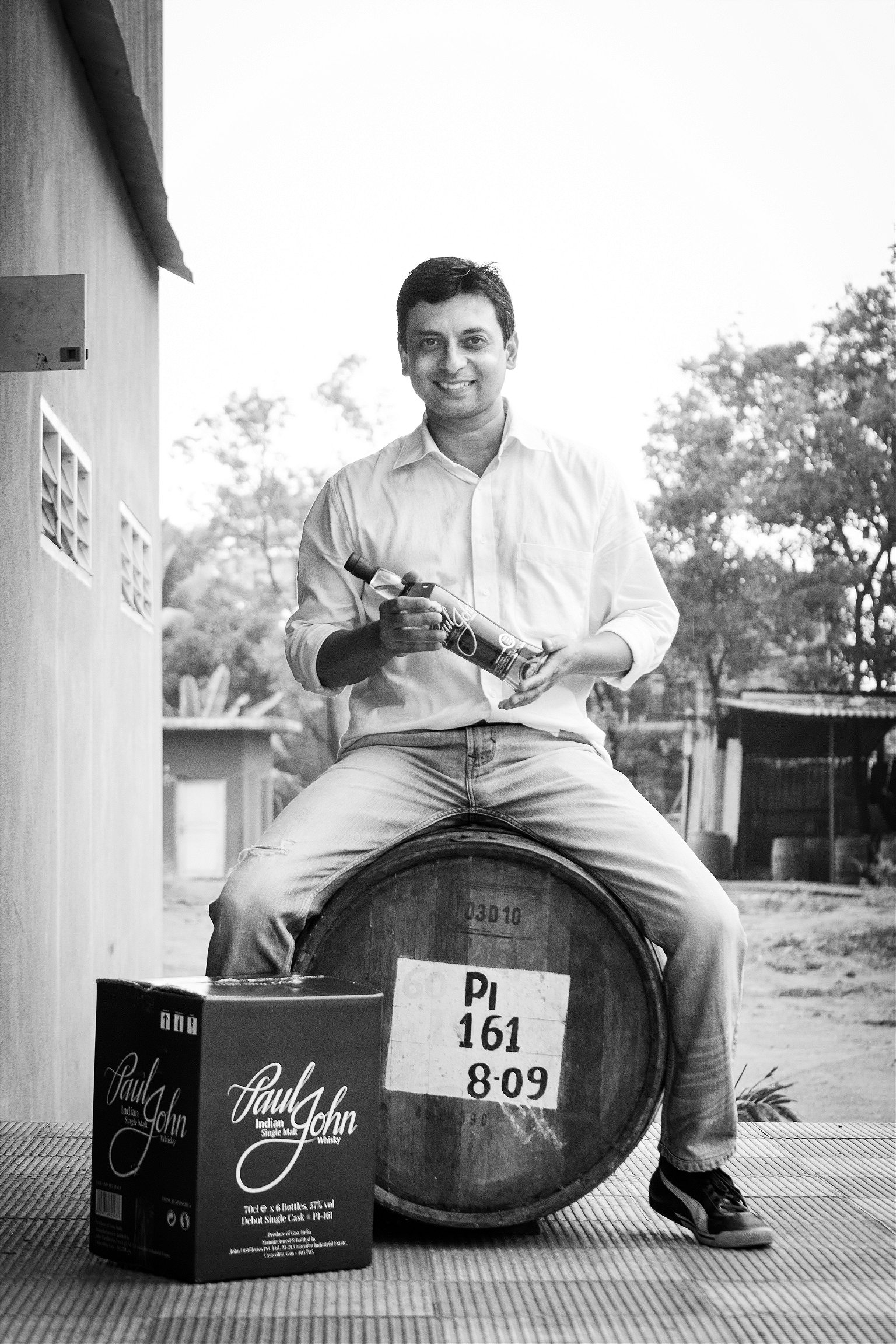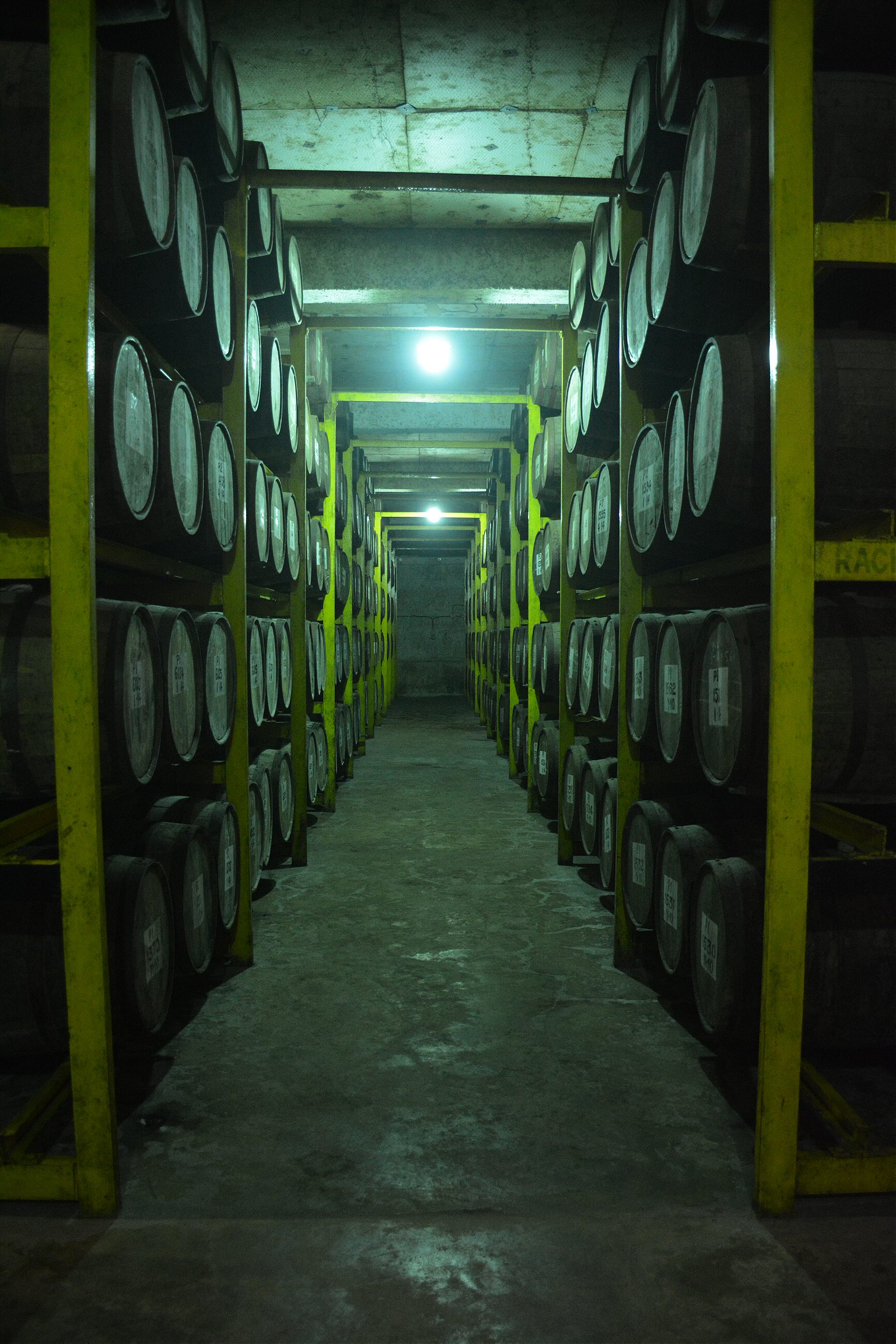In tropical Goa, a master distiller takes on single-malt.
I’ll admit that the first time I tasted Paul John Single Malt Whisky, it was only because I was curious to see what was so Indian about it. Was it only Indian because it is produced in India, or was there more to it?
Granted, it’s hard to think about single malt whisky without picturing the lush, verdant landscapes of Scotland. Far from those cool climes is Goa, India’s very own sunshine state with a quintessentially tropical, balmy, beach-friendly kind of weather that has made it one of India’s most popular tourist destinations.
A dusty corner of the Cuncolim Industrial Area in Goa seems like an especially unlikely place for a distillery. It’s a large site surrounded by warehouses and factories delivering everything from chemicals to alloys to rubber products. But this is the heart of production of an award-winning Indian single malt whisky.
When talking to Michael D’Souza, the unassuming master distiller at John Distilleries in Goa, his seems to be a demanding yet fascinating profession. It’s an unconventional one at that, even more so in India. D’Souza started his career at a time when the newly booming IT field was wooing many of his peers.
But as it turns out, D’Souza’s choice may have been the more prescient one. A Bank of America Merill Lynch study found that in 2014, Indians consumed over 1.5 million liters of whisky, more than twice as much as the United States, which came in second place with just 492 liters. Moreover, a boom in consumption of imported Scotch has made the spirit particularly desirable; India is currently one of the world’s fastest-growing Scotch import markets.
The global whiskey industry has seen a considerable upswing in malt whiskeys—the generic name for Scottish-style whisky—coming from outside Scotland. “It’s growing in various directions,” says Karina Aggarwal, an independent whiskey and beer commentator from India, who believes the Indian market is definitely opening up to experimentation and alternatives to Scotch alone.
“For so many years Scotch brands have not needed to do anything new, but now there’s whiskey sprouting form everywhere—from Taiwan to Canada—and many of them are challenging Scotch. Japanese whiskey has exploded, globally, for example. Irish whiskey is becoming popular, too. Bourbon is likely to become bigger,” she tells me.
India, as well, has seen the rise of some home-grown brands looking to compete on the international level, with Paul John and the Amrut distillery leading the way.

Established in 1992, John Distilleries quickly grew to be a leading spirit producer in India. After successfully launching a number of liquors, founder and chairman Paul P. John developed a passion for single malts during a stint in the U.S. A desire to create an Indian single malt that would be on par with some of the world’s most popular drams led to his collaboration with D’Souza.
Since 2009, the distillery in Goa has consistently churned out this indigenously developed single malt. However, it wasn’t until 2012, when it was released in Britain, that it captivated the minds and palates of whisky aficionados the world over. The distillery was recognized by whisky connoisseur Jim Murray, who gave it 94.5 points (ahead of the famed Glenmorangie and Laphroaig) and bestowed upon it the Liquid Gold award in his Whisky Bible for the year.
“Whisky making is a fusion of science, art, and technology. My vision and idea has always been to make truly unique Indian whisky,” D’Souza tells me. Since the process of making whisky is hugely dependent on the basic elements used in its production—wood, copper, water, grain—at John Distilleries, most are locally sourced. With a local, dependable water source, 100 percent Indian barley, and 32-stave barrels made of the wood sourced from Indian trees, this whisky is as Indian as it gets.
“My efforts are to get the most from the local ingredients,” he explains. Paul John whisky is made from six-row Indian barley, harvested in summer. Typically, Scotch is made from two-row barley, which has larger grains and therefore, less husk. With six-row, the grain size is smaller and the husk content higher, a crucial flavor-imparting element.
“In terms of extraction, we get a lower yield, but the six-row barley is higher in protein and husk and lower in carbohydrate content, which is what gives it a richer and more complex flavor,” he says.
Water also plays a crucial role in whisky quality: the purer the better. However, D’Souza disputes the belief that the best Scotch is produced from a pristine, pastoral setting. “Goa is known for quality water. We have our own water source. Yes, it plays a dominant role but it doesn’t mean you need to have your distillery by a stream in Scotland, because the water has to be distilled anyway,” he says, referring to the process by which the water is purified through vaporization.
At John Distilleries, an age-old method of double distillation in two traditionally designed copper pot stills is in use. But perhaps the feature that most distinguishes this Indian whisky from any other is the process of ageing and storing. Especially given Goa’s extremely hot, tropical weather, with average temperatures in the range of 85-90 degrees Fahrenheit, whisky tends to mature exponentially faster than it would in, say, Scotland.

“Apart from whisky making, barrel making also fascinates me as it’s very important to choose the right type of barrel in order to get the perfect flavor,” D’Souza says. At John Distilleries, the barrels incorporate 32 staves—as the slats that form the sides of the barrel are known—from the wood of different Indian trees. Therefore, every barrel produces a different flavor. With more than 8000 barrels, he’s hit on flavors varying from citrus and honey, to mellow vanilla, to heady spice, and even tropical fruity notes.
The whisky continues to develop and mature when in storage, aided by the interaction with the barrel, which delivers a wide palette of natural colors ranging from sparkling copper, rich vibrant amber to dark mahogany and imparts distinct flavors such as spices, marmalade, chocolate, coconut, dry fruit, vanilla and honey. There’s also other elements imparted by the local environment. “Our whiskeys are mineral,” adds D’Souza, “because we are not far from the sea. So you’ll notice an extra almost saltier bite to the drink.”
“We don’t use any temperature control, allowing the whisky to interact directly with the environment,” he adds, pointing to the warehouses. One is below the ground and is therefore cooler and damper, imparting elegant, floral notes; the one above ground level, facing more exposure to the elements, lends the robust, woody range of flavors, D’Souza explains.
In order to keep track of these nuanced flavors, the distiller must keep himself in top fighting form. While it might seem like he spends his days in an inebriated haze, he actually keeps to a rather austere lifestyle.
I start my day early when my palate is fresh to taste whiskies
“Whisky making is a serious profession and discipline is key. My lifestyle is entirely different from the rest of the staff at the distillery. My eating habits are different; I avoid spicy and pungent food. I do not smoke because it impairs taste buds; I start my day early when my palate is fresh to taste whiskies; I try to finish samplings before lunch,” he says.
Since the launch of Paul John his life has been filled with hectic travels, not just to promote his products but also to interact with his audience and understand their preferences. “It’s always easy to make something according to your own taste, but understanding the tastes of others, by and large, is the key to success,” says D’Souza, who has created seven editions of their distinctly dark, smoky whisky.
The demand for whisky in India has continued its steady growth in the last couple of years, with some reports indicating a 28 percent growth in the market by value. While once considered an old-fashioned spirit inherited from a colonial past, Scotch and whisky are becoming the preferred choice for an upwardly mobile segment of millennials with discerning tastes, rising incomes, and access to a thriving culture of eating out.
Aggarwal attributes this change to a shift in perception, and the rise in awareness, spending power and capacity to travel amongst India’s young. “For the young population, cheap whiskey was the choice for a quick high. The difference now is for people who have a disposable income it’s not unusual to buy a bottle of Glenfiddich or Glenlivet or anything else from the premium segment.” The Scotch and whiskey market has responded to this shift by targeting this largely and mostly untapped market of youngsters.
And while foreign producers, particularly Johnnie Walker, dominate the market for now, D’Souza believes that within this constantly evolving market the demand for an Indian whisky with a distinctly local flavor will only grow.
“India is massively diverse with different cultures, colors, and flavors,” D’Souza says. “And my intention is to deliver a similar vibrancy in the character of the liquid in the bottle.”